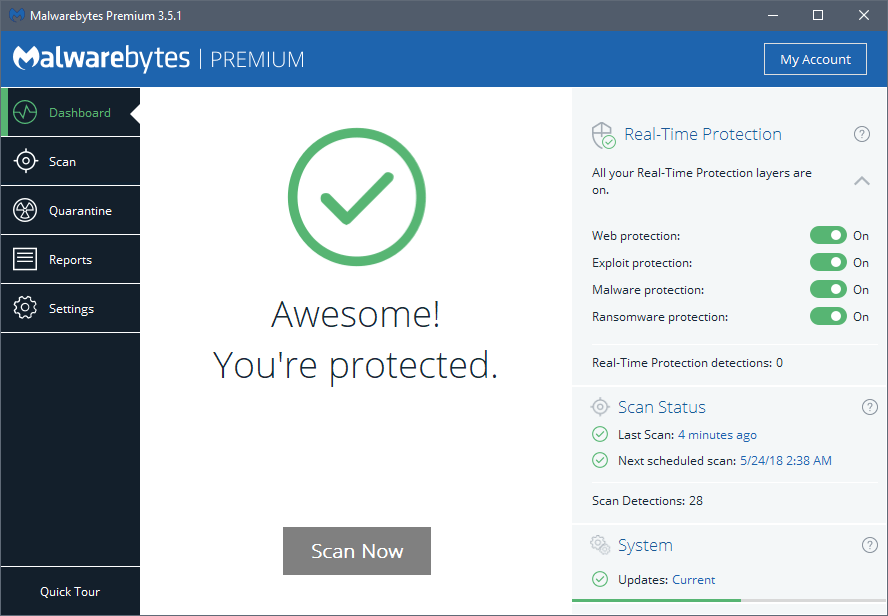A look at Malwarebytes 3.5.1
I have to admit that I did not really use Real-Time Protection or the Full Version of Malwarebytes all that much anymore on my Windows machines after the release of version 3.0 of the application. But I do still use the trial version to cleanup crud from systems.
Core reasons were super high memory usage and stability issues which the first couple of updates that the company released to remedy the situation did not fix.
It did not help that the company released a broken update in early January of 2018 that caused high RAM and CPU usage; the update was pulled quickly but the damage was done.
Malwarebytes 3.5.1
Malwarebytes released version 3.5.1 of the client software for Windows recently; reason enough to take another look at the software program to find out what has changed, improved, and what has not.

If you have not used Malwarebytes for some time you may notice that the interface changed slightly.
The right sidebar content changed; not dramatically but still noticeable. The real-time protection modules have toggles now to turn functionality on or off whereas Malwarebytes used less visible text-only information previously for that.
While it is not a lot easier to toggle a feature on or off, it is easier to find out if a feature is enabled or not at the time.
One of the main issues that I had with Malwarebytes 3 was the application's high memory use. The situation has not improved all that much unfortunately; a quick Windows Task Manager check revealed that the Malwarebyte's processes used roughly 280 Megabytes on the test system with the interface displayed and about 220 Megabytes with the interface not displayed.
The new version fixed an issue in the program's anti-ransomware module that caused high memory and CPU usage, and crashes related to the web protection module. Some users reported abnormally high memory usage and this may have fixed the issue. The two updates that Malwarebytes released in March for the application did fix several crash and stability issues as well.
Stability-wise, progress appears to have been made. The program was responsive both when it ran in the background but also when it was scanning the system or performing other operations. So, if you dropped the program because of stability issues, you may want to give it another try to see if those are resolved for you as well especially with the crash related fixes in the three releases of 2018.
Malwarebtyes 3.5.1 supports Hypervisor Code Integrity (HVCI) and Device Guard, requirements to meet Microsoft's compliance requirements according to the official release notes.
Closing words
Memory usage is still high but stability appears to have improved with the latest releases. If you suffered from stability issues for the most part, now may be a good time to give Malwarebytes another try to see how it performs with all the fixes included.
Now You: Do you run Malwarebytes or another software?
This article was first seen on ComTek's "TekBits" Technology News

- Log in to post comments